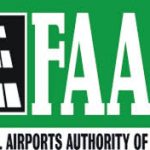Advanced air forces around the globe are often highly technologically dependent, considering the sophistication and complexities inherent in aerospace technology. These complexities are often surmountable through painstaking efforts of many years of unbroken research and development, with huge financial burden on the nation and its citizenry. The sacrifices may seem grave but the benefits are no doubt greater, considering the roles played by airpowers in the world wars, as well as other conflicts since then.
In recent times, the battle has left the war fronts for cities where it may be difficult to separate friends from foes. These emerging threats, which are mostly unconventional, are infamous, more deadly, more expensive, evasive and globally knitted. Unfortunately, the technology required to combat these ugly trends are scarce and selfishly hoarded by more technologically advanced countries that have developed a strong technological base over the years. These countries are more conscious of maintaining their top military rankings and deliberately blocking perceived adversaries from gaining access to their latest discoveries, so as to retain their lead in the world. Consequently, developing countries are left with little or no choice than to re-invent themselves and look inward towards harnessing local resources, so as to find lasting solutions to the shortages in military wares needed to confront various security challenges facing their various countries.
Toeing this noble path is the Nigerian Air Force (NAF), which is now exploring its rich human resource base and scoring many firsts in the last three-and-a-half years, a feat worthy of celebrating in its 55 years of existence. This may not be unconnected with the resolve of the current NAF administration, led by Air Marshal Sadique Abubakar, who took it upon himself to reinforce the culture of self-reliance and prudent management of resources within the service and ensuring that the NAF partners with ministries, departments and agencies (MDAs) for enhanced research and development to further professionalise the service, as well as ensuring that its platforms are serviceable to continue to ensure the integrity of the Nigerian air space.
Considering the key requirements for the attainment of its statutory mission of ensuring the integrity of Nigeria’s airspace, one of NAF’s objectives is to continually ensure that sufficient aircraft are available for deployment when the need arises. However, the spares and components that are essential to the serviceability of these aircraft are not usually manufactured in Nigeria. It was, thus, the norm for NAF to source all required parts from various original equipment manufacturers overseas. Unfortunately, the deliveries of these components which are often exorbitant are often delayed; thereby, resulting in the prolonged down-time for many of its aircraft. In realisation of these shortcomings, NAF did not only return to the archives to retrieve Nigerian Air Force Research and Development Policy which was formulated on October 24, 2017, but also established the Nigerian Air Force Research and Development Center in 2015 for basic and applied aerospace research and development. Thereafter, all NAF personnel who had undergone various post-graduate programmes in Aerospace Vehicle Design at different overseas universities, as well as those talented in the area of Aerospace Research and Development, were redeployed to the NAF Research and Development Centre in Kaduna, with their various mandates, to form the nucleus of NAF research activities.
Under the leadership of Air Marshal Abubakar, another step taken by NAF to reinvent itself was the signing of a Memoranda of Understanding (MoU) with 22 selected Nigerian universities and research institutes. Sequel to signing these MoUs, various research and development cells, comprising resource persons from the selected tertiary institutions and NAF personnel, were formed. The cells were assigned the tasks of addressing different aircraft and related maintenance challenges, based on identified competences. The sustenance of these partnerships has continued to impact positively on aircraft serviceability in the NAF. This, in turn, has enhanced the ability of the NAF to project air power towards contributing not only to the resolution of Nigeria’s current internal security challenges but security challenges within the West African Sub-region. Accordingly, this move has resulted in several breakthroughs, further enhancing the efficiency of the service.
One significant breakthrough that is worthy of celebration and capable of elevating the NAF to a place of pride among air forces in the world was recorded when the Service inducted an operationalised Unmanned Aerial Vehicles (UAV) known as the ‘Tsaigumi’ on 5 February 2018, at the NAF Base Kaduna. The ‘Tsaigumi’ which is capable of day and night operations, has an operational endurance in excess of 10 hours, a service ceiling of 15,000 feet and a mission radius of 100km. Also, it has a maximum take-off weight of 95kg and its payload is an electro-optic/infra-red camera system. The modern trend in military aviation is the employment of UAVs in various missions and the NAF has refused to be left behind.
Other products of NAF R&D efforts in partnership with various tertiary institutions and other local organisations include the production of a Mi-35 helicopter hydraulic accumulator diaphragm which has since been patented by the National Office for Technology Acquisition and Promotion (NOTAP), a parastatal under the Federal Ministry of Science and Technology. The NAF embarked on the production of this important component, in order to address the increasing difficulties faced in procuring the item from Original Equipment Manufacturers (OEM) from overseas. The hydraulic diaphragm is a very important component of the Mi-35 helicopter, which is one of the main platforms being employed in the Northeast and other parts of the country. Aside from being very expensive, the diaphragm requires frequent replacement to ensure safe conduct of flying operations.
Thanks to the leadership of Air Marshal Abubakar, other notable breakthroughs of the NAF R&D efforts include the design and construction of Mi-35P 30mm Cannon Loader, production of heat shield productive cones for the Alpha jet aircraft, production of anti-skid test bench for Alpha jet aircraft, production of brake pads and rivets for Alpha jet aircraft, repair of Augusta 109 helicopter multi-function display (MFD), replacement of electrolyte in battery of F-7NI fighter aircraft, as well as the combat configuration/weaponisation of Alpha jet, EC-135 and L-39ZA.
Accordingly, the NAF, under its current leadership has defiled all odds despite the current economic downturns being experienced in the country. These R&D efforts in collaboration with various indigenous organizations, as well as tertiary institutions, have no doubt impacted positively on aircraft availability for diverse air operations, particularly in the ongoing counter-insurgency operations. Also, it is worthy to note that this may not have been possible without the resources readily made available by the federal government.Pembi, a public affairs commentator, writes from Abuja



